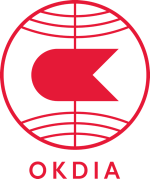What is the difference between closed and open rules, One Design and Development rules? What are we currently and what will we be under the new rules?
Closed class rules are where the default is that anything not specifically permitted is prohibited.
Open class rules are where the default is that anything not specifically prohibited is permitted.
One Design rules are for classes where the boats should be as identical as possible within a defined set of small tolerances.
Development rules are for where the purpose of the class rules is to control the parameters defining a permitted boat.
The current set of OK Dinghy rules are termed as One Design. (Class Rule No. 1). As such, the measurement of the boat is controlled by the defined tolerances.
With the introduction of SCR, closed and open categories replace One Design and Development classes.
So under SCR/ERS, rules must either be catagorised as closed or as open. Alternatively each section can be either open or closed. If a section is open however, then it has to list everything (and that means absolutely everything) that isn’t wanted.
Open rules can be used for Development classes where there is no need for stringent equipment control and where there is no desire to keep the equipment the same. Hence the development. However in some cases closed rules would also work.
The OK rules are based on measurement and tolerance, and keeping the boats as identical as possible. So we cannot have open rules.
Given that our new rules must either be open or closed, the proposed new rules have to be categorised as closed. This is stated in the Introduction to the new rules and at the beginning of Part II. This applies to all sections in Part II (C – G).
To all intents and purposes closed class rules and One Design rules are the same thing. The only minor difference is that closed rules have to be completely inclusive. The current OK rules are effectively closed except for a lot of practices and equipment that we have always used and assumed were accepted, but in fact have never been mentioned in the rules. For example, the tiller is never mentioned so under closed rules it must be included. There are a lot more examples and one of the tasks of the conversion was to include all these ‘assumed’ parts and practices.
Further afield, if we take a review of the 40 centerboard International classes we find the following.
So far 20 classes on this list have adopted SCR. Of these 20 classes, 11 are manufactured classes and have little or no measurement control. The remaining 9 are measurement controlled classes. However, ALL 20 classes have closed rules.
No class on the centreboard international list has, as far as I’m aware, yet adopted any SCR based open class rules.
The fact is that nothing, or very little, will change in the conversion from One Design rules to closed rules. The benefits are that the way OK Dinghies are made and measured will be better defined and controlled, and the rules will be easier and simpler to enforce.
By saying that the new rules are closed rather than One Design, we also have a perfect example of how the new rules are clearer and more specific and by being so are removing some of the ambiguity of the current rules. To try and remove all ambiguity would surely be an exercise in futility, but reducing it as much as we can is one of the main reasons for making the conversion.
